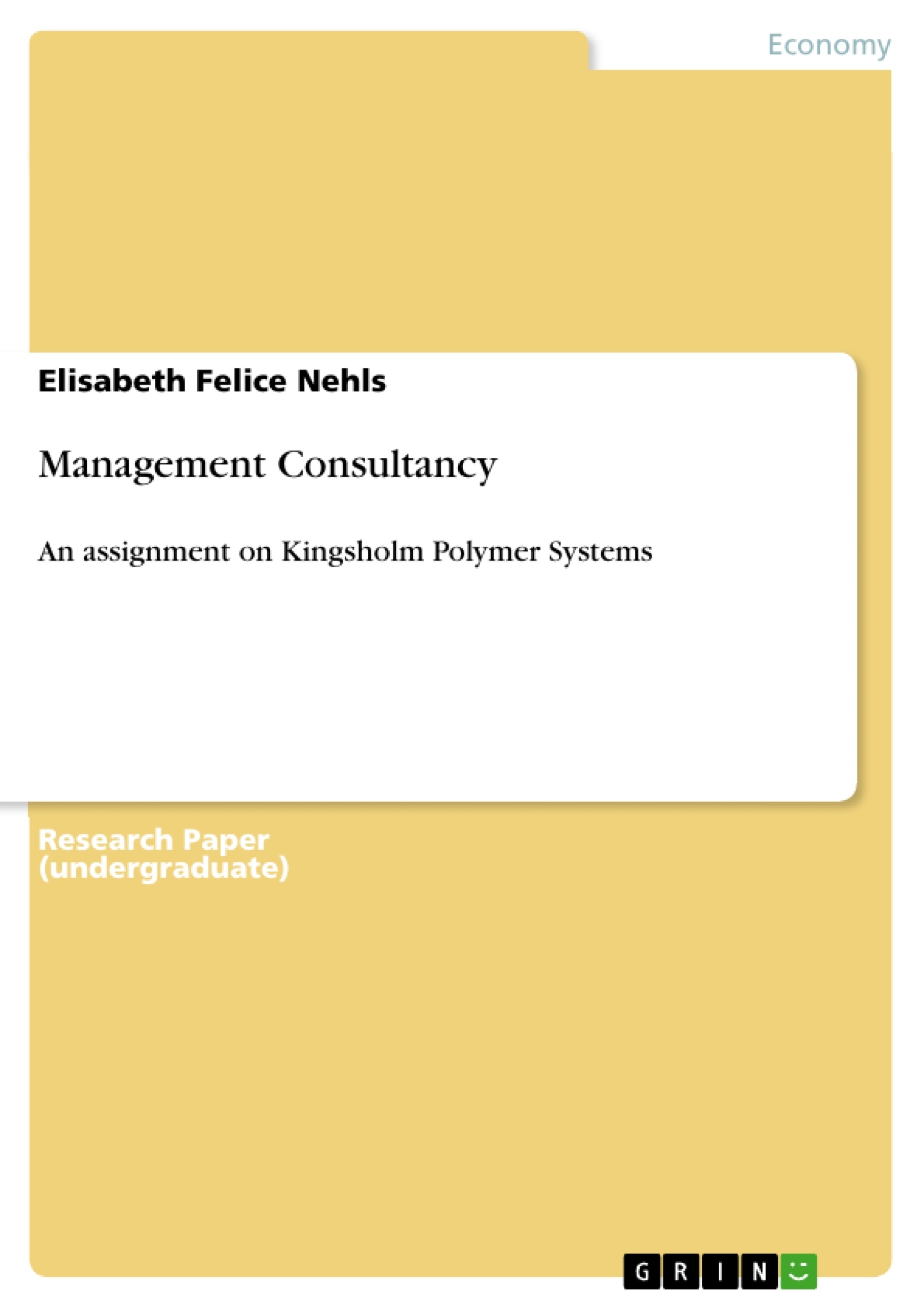Kingsholm Polymer Systems (KPS), a tape producing company, is located in the UK. It consists of three different sites: the paper masking tape faculty, a pvc tape producing faculty, and a cable jointing faculty. For KPS is in the producing and processing industry, the company acts as supplier to main customers such as electronic wholesalers, electronic cable manufacturers, do-it-yourself stores (DIY), and the automotive industry. 450 members of staff are currently employed at KPS. The challenge KPS has to approach is to bring a new product, the so called Haltadon, to market. By doing so, KPS seeks to achieve a better market position, increase sales, enhance market share and better return on investments (RoI). To cut it short: great expectations concerning improved profitability and reduced costs focus on the desired product launch, an undertaking coming along with certain defiance:
• KPS does have a numerous amount of technical experts but the products do not always meet customer`s expectations.
• KPS does have sales and finance employees but to analyze which clients and products bring value to the company has not been possible yet
• Some of their products are more innovative than those of rivals but because KPS
lacks patent protection, innovations soon become commodity and prices decrease.
• KPS has made it to involve up-to-date cultural aspects but internal disparities especially concerning the HR aspect lead to unsatisfied employees.
• KPS missed access to low priced raw materials which makes it hard to compete with rivals and sustain high margins.
Internal and external defiance mentioned above show that KPS offers some potential - even though the company is struggling at the moment. That underlying potential is the issue which is now to be developed through a situational audit, a strategic analysis, and an implementation of change management activities. An appraisal of recommended consulting activities will be done to support the analysis.
Inhaltsverzeichnis (Table of Contents)
- Objectives to introduce
- 1. A situational audit
- Internal analysis
- External analysis: The Industry
- 2. Analysis of strategic issues
- Environmental strategic issues
- Strategic issues on business level
- Strategy map
- 3. Analysis of change management challenges faced by management
- Getting people’s commitment to the change process
- Three stages of change management
- 4. Critical appraisal of the consulting activities
- Conventional approach
- Alternative approach
- Consultants as innovators or legitimateness of client’s knowledge
- Consultants as agents of stability
Zielsetzung und Themenschwerpunkte (Objectives and Key Themes)
This assignment focuses on the case of Kingsholm Polymer Systems (KPS), a UK-based tape manufacturing company facing challenges in bringing a new product, Haltadon, to market. The analysis aims to identify and address both internal and external issues hindering KPS’s success, ultimately proposing strategies to improve profitability and market position.
- Situational audit of KPS, including internal and external analyses
- Strategic analysis of KPS, focusing on key issues related to Haltadon launch
- Development of a change management plan to overcome challenges and implement the strategy
- Critical appraisal of various consulting approaches and their relevance to KPS’s situation
- Identification of key themes including: innovation, profitability, market position, change management, and consulting practices.
Zusammenfassung der Kapitel (Chapter Summaries)
Chapter 1: A situational audit
This chapter provides an in-depth analysis of KPS’s internal and external situation. The seven-S model and the fishbone framework are used to identify KPS’s weaknesses, particularly in innovation processing. The external analysis utilizes Porter’s Five Forces Framework to evaluate the competitiveness and profitability of the UK industrial tape industry, highlighting the challenges KPS faces from buyers, suppliers, new entrants, and rivals. Finally, the PESTLE framework reveals the relative stability of the external environment while acknowledging potential impacts on sales forecasting and production processes.
Chapter 2: Analysis of strategic issues
Chapter 2 builds on the findings from the situational audit, highlighting strategic issues impacting KPS’s ability to launch Haltadon successfully. It examines the environmental and business-level challenges, including KPS’s lack of brand recognition, undefined customer value proposition, cost structure challenges, and organizational culture that hinders innovation. The chapter concludes with a proposed strategy map that outlines the key areas of focus for KPS’s transformation, aiming to increase RoI, enhance market share, and foster a more innovative company culture.
Chapter 3: Analysis of change management challenges faced by management
This chapter delves into the challenges associated with managing change within KPS, specifically in relation to the implementation of the proposed strategy. It emphasizes the importance of gaining employee commitment, exploring ingrained habits, and establishing a shared vision for the future. The chapter presents Lewin and Kotter’s change management models, outlining the “unfreeze,” “change,” and “freeze” stages and their respective sub-stages, providing a theoretical framework for KPS’s change process. The chapter also outlines specific actions for each stage, including communication strategies, task force formation, and fostering employee involvement in the change process.
Chapter 4: Critical appraisal of the consulting activities
Chapter 4 examines the different approaches to management consultancy, comparing the conventional expert-driven model with the client-centric “knowing” approach. It explores the contrasting perspectives of consultants as innovators versus legitimizers of client knowledge, highlighting the potential benefits and limitations of each approach. The chapter also discusses the role of consultants as agents of stability, offering insights into how they can help manage uncertainty and build confidence within the organization.
Schlüsselwörter (Keywords)
The main keywords and topics explored in this analysis include: tape manufacturing, Haltadon, situational audit, strategic issues, change management, consulting approaches, innovation, profitability, market position, customer value proposition, brand recognition, cost structure, organizational culture, employee commitment, knowledge transfer, and uncertainty reduction.
- Citar trabajo
- Elisabeth Felice Nehls (Autor), 2010, Management Consultancy, Múnich, GRIN Verlag, https://www.grin.com/document/175228



